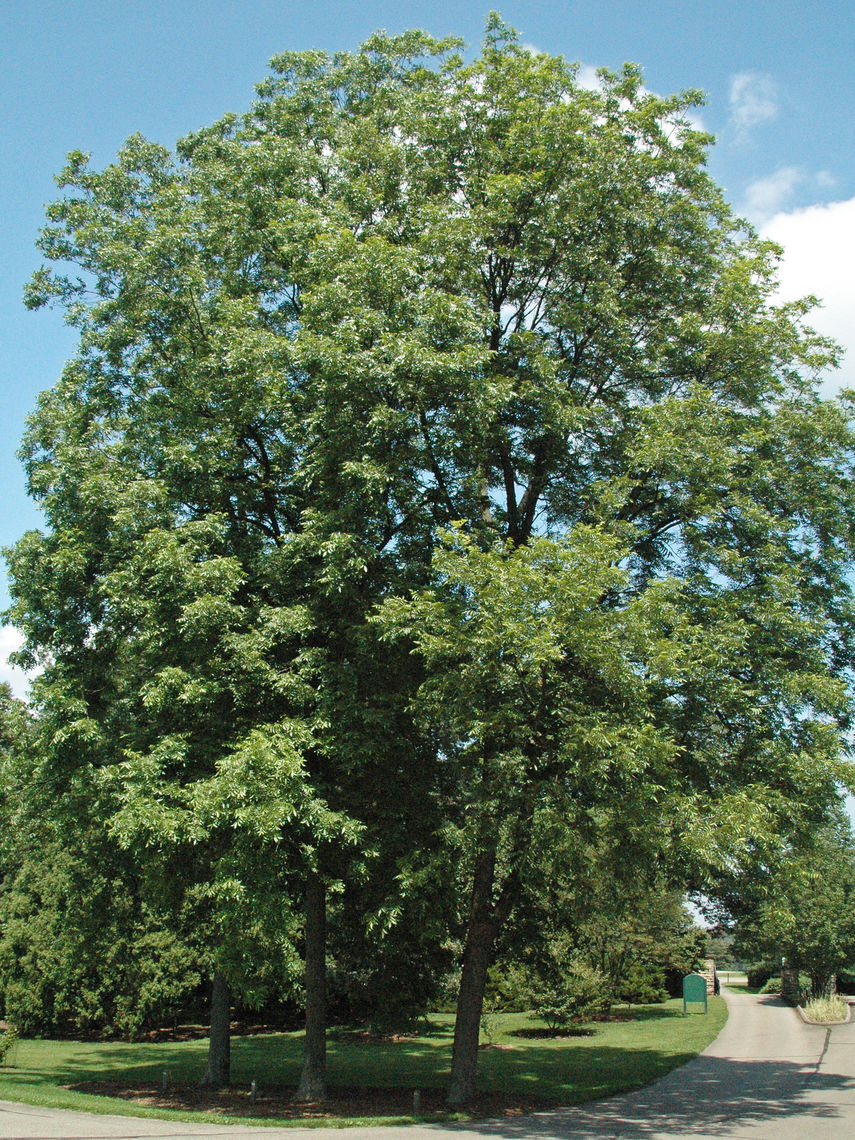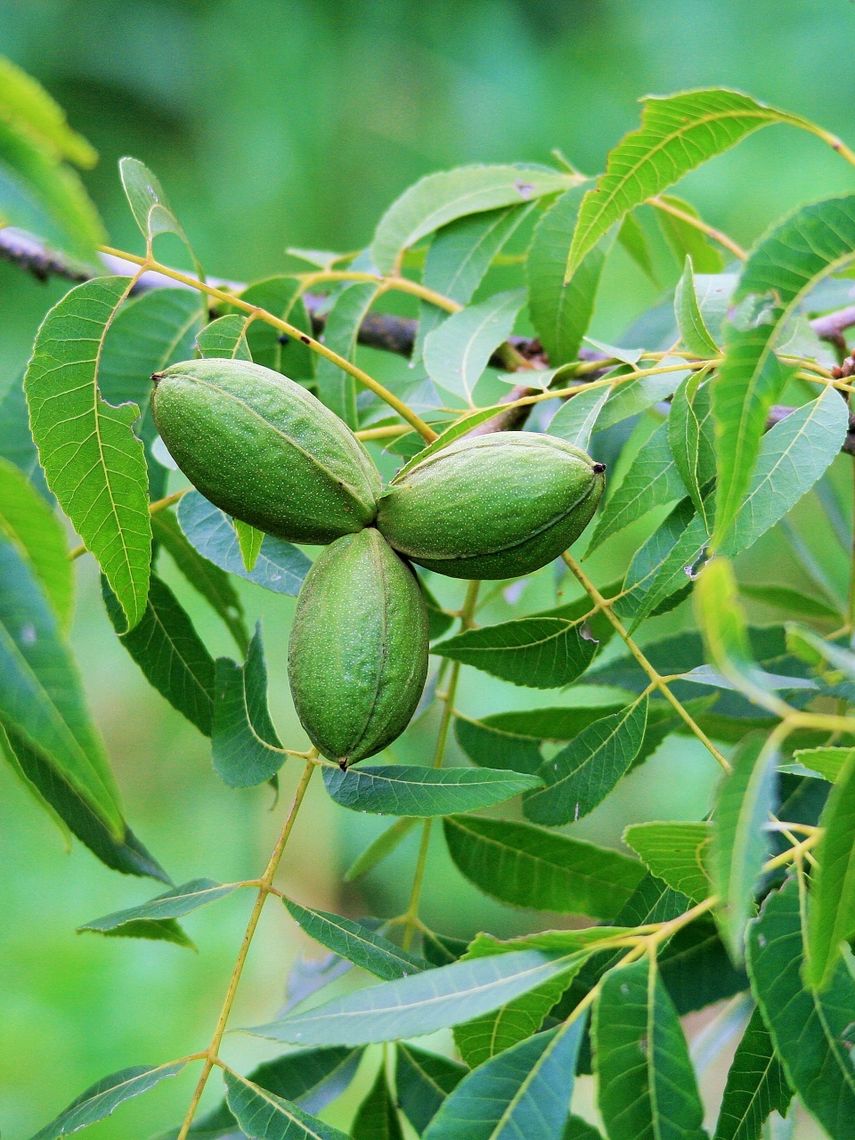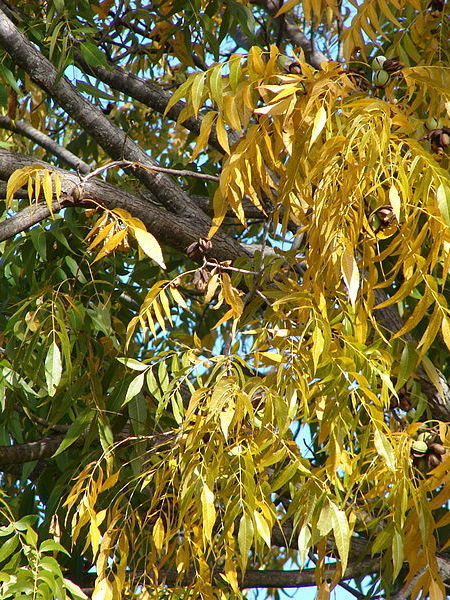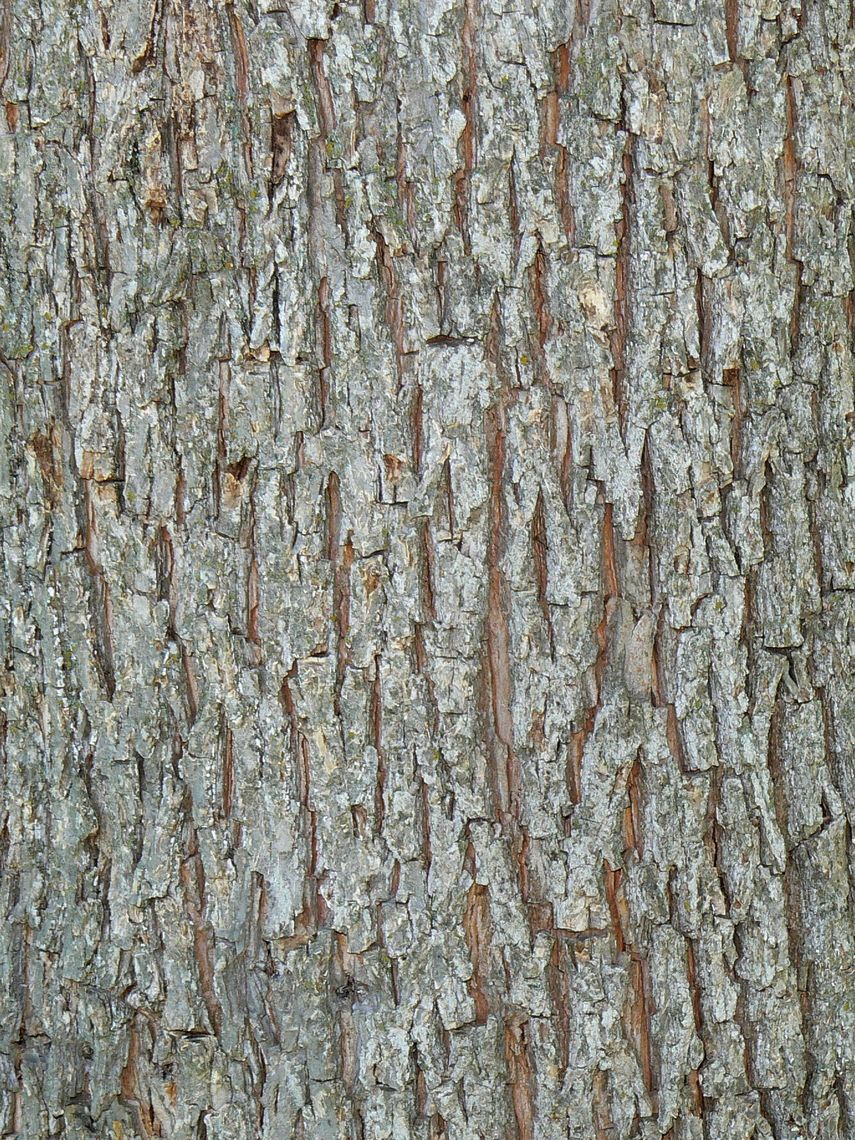Pecan (Carya illinoinensis)
This tree is the largest of the hickories. The leaves are dark olive green and are composed of 11-17 leaflets, each attached in pairs to either side of the petiole with one leaflet on top. Nuts appear in the summer, encased in a round brown outer shell, and ripen in the fall. This tree attracts birds and small mammals.
Family: Juglandaceae (Walnut)
Characteristics: The dark olive green leaves are odd-pinnate (leaflets attached in pairs along petiole with one on top) and composed of 11-17 leaflets, which are each 4-7 inches long. In the fall, leaves turn a dull yellow-green. Flowers appear as drooping male catkins and short female spikes. The female flowers give way to the edible pecan nuts. Each nut is encased in a thin and rounded brown shell. Bark is brown-black and can become scaly with age. This is an upright and spreading tree with a rounded shape. It grows 70-100 feet high and 40-75 feet wide.
Foliage: Deciduous (leaves lost seasonally)
Geographic Origin: Midwest North America (non-native)
Cultivation Notes: Requires medium maintenance. Does best in full sun. Prefers moist and well-drained soils. Nuts ripen consistently only in warm regions. This tree can be quite difficult to transplant, due to its deep taproot.
Number on Campus: 1
Sources: Dirr, Morton Arboretum, Missouri Botanical Garden





